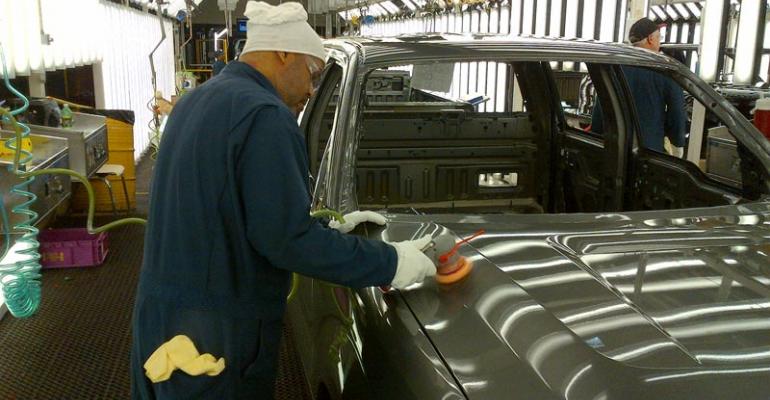Ford says its all-new technology developed in-house is proving successful in helping eliminate fine particles of dirt during the paint process to ensure an optimal finish.
The dirt-detection technology, which Ford says is an industry first, uses a high-resolution camera to generate a 3-dimensional model that can be used to identify and eliminate dirt particles smaller than a grain of salt.
The imaging system applies varying degrees and angles of light while scoping the paint surface of the vehicle body to identify dirt in paint and other irregular conditions, cueing operators where to polish and buff out imperfections.
High-resolution images – 3,150 are captured in 15 seconds on every vehicle – are stitched together for a full 3-D image that is compared to a perfect computer model.
Tom Dougan, project manager-global paint applications, says dirt is a byproduct of every painting process that must be minimized, but completely eliminating the particles is difficult using conventional processes.
“Minute particles can enter a shop floor from multiple environmental sources, machinery or workers, which makes paint quality one of the toughest variables to control in production,” he tells WardsAuto. “The (new) technology is efficient enough to capture 100% of production.”
The C-Max cross/utility vehicle was the first product to utilize the new technology during the painting process at Ford’s Valencia, Spain, assembly plant.
Based on the new technology’s success, it now is being used at the auto maker’s Dearborn, MI, and Louisville, KY, truck facilities and launch this year at the Louisville, KY, and Chicago plants as well as the Oakville, ON, Canada, facility. It also will be installed at Ford’s Flat Rock, MI, and Kansas City, MO, facilities in 2014.
Ford data shows the new system leads to an 82% improvement in paint quality, helping boost customer-satisfaction metrics for surface finish.
“This is one of the most exciting integrations of optical science and digital technology in the automotive industry,” Dougan says, noting the technology was developed by a team of Ford employees, university scientists and a supplier in Valencia. “It was a team effort from the very beginning.”
Operators who conduct the paint scoping receive training on how to read the screens and perform other system functions. Dougan says training is minimal, as the system is “self-sustaining.”
He says Ford is not aware of any other company that is developing or using a similar technology.




